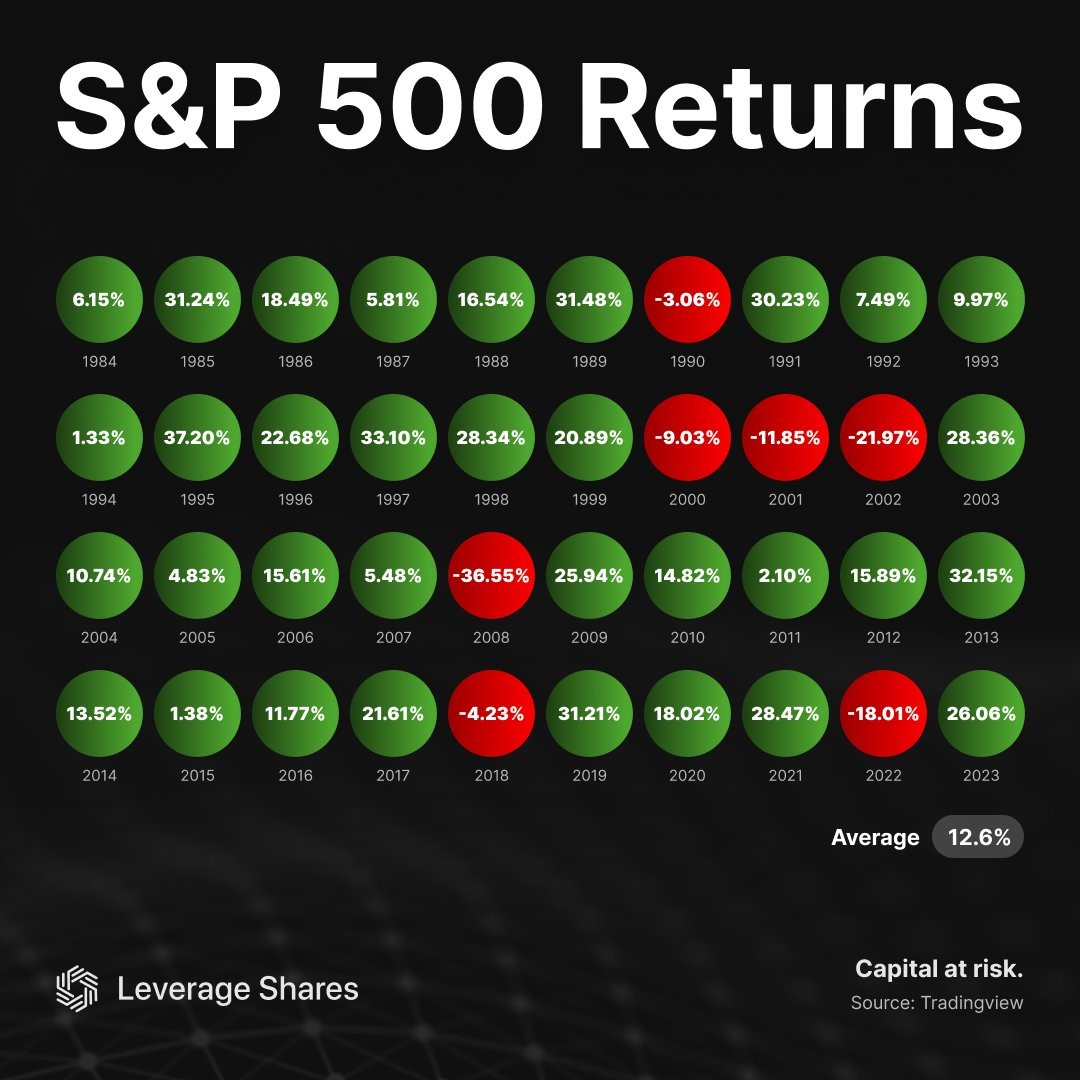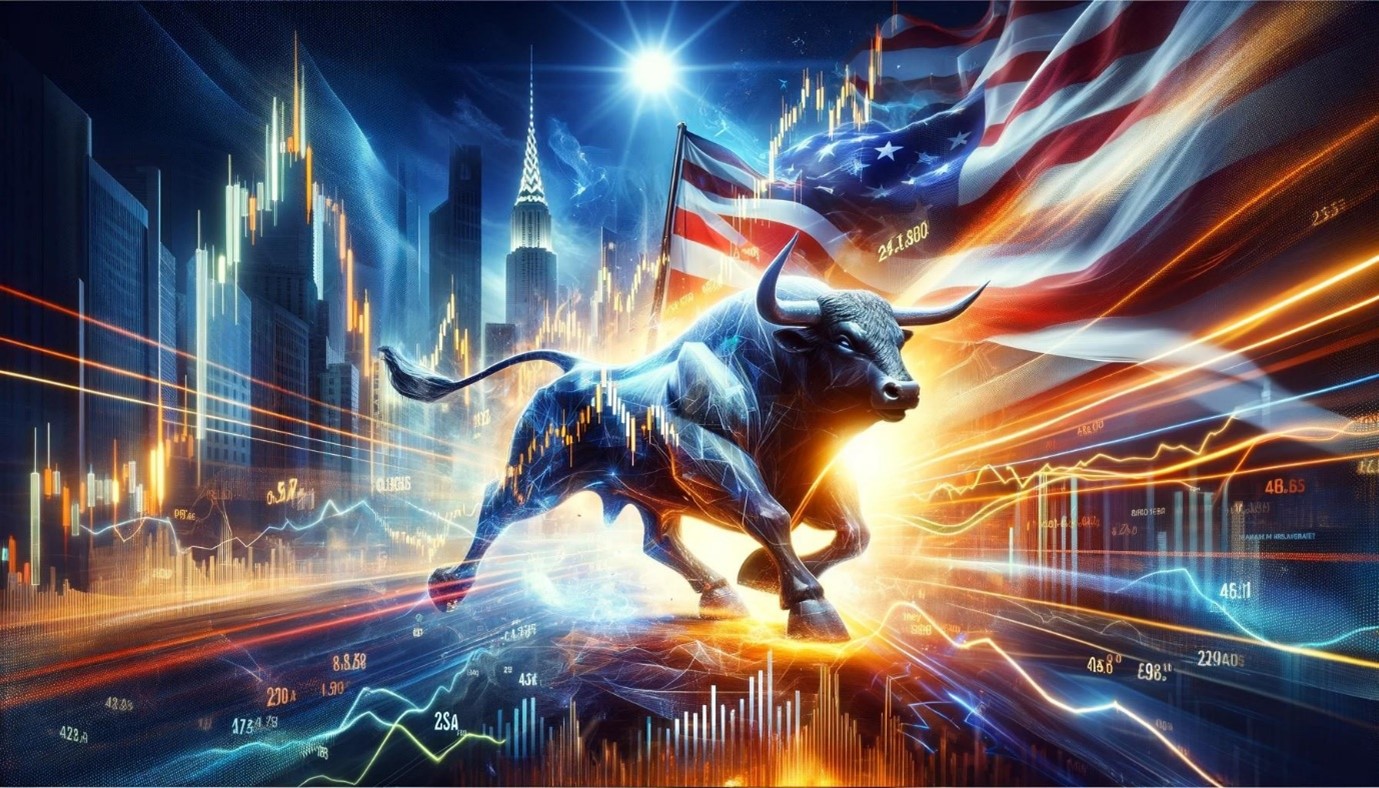The S&P 500.
It’s famous. It’s legendary. It’s always being talked about.
This American large-cap index is so prominent, it seems to exert its own gravitational force on the stock market, doesn’t it?
In fact, just yesterday, I was browsing the financial news while having my breakfast. And — lo and behold — I came across the S&P 500 being mentioned 21 times. And I was only halfway through my bowl of cereal.

Source: Leverage Shares
Historically, it’s not hard to understand why the S&P 500 is so popular:
- A 40-year snapshot of the index reveals a pleasing track record. Yes, investors have experienced rainy days roughly 18% of the time. But the other 82% of the time? Well, investors have enjoyed sunny days. Happy days. Profitable days.
- So, with an average annual return of 12.6%, what does the power compounding look like? Well, an imaginary sum of $100,000 invested at the beginning of 1984 would have mushroomed to over $11.5 million by the end of 2023.
- As they say: ‘Success breeds success.’
Of course, past performance is no guarantee of future. Still, in the present day, it’s impossible to escape the euphoric mood in the market:
- A lot of punters are still feeling bullish about American large-caps. They are clearly setting the pace for the rest of the world. This is especially true as the artificial-intelligence craze tightens its grip.
- But is there a downside to this? Well, if you look closely at S&P 500, you will notice that it seems to be top-heavy. It is dominated by the giants. In particular, the so-called Magnificent Seven — Nvidia, Alphabet, Amazon, Apple, Meta, Microsoft, and Tesla.

Source: Image generated by OpenAI’s DALL-E
In 2023 alone, the Magnificent Seven delivered a return of more than 100%:
- Within the S&P 500 index, these goliaths occupy the pole positions. The Magnificent Seven have attracted an influx of cash, while overshadowing everybody else.
- At the time of writing, the Magnificent Seven have a combined market cap of around $15 trillion. Meanwhile, the S&P 500 has a market cap of around $44 trillion. So, the Magnificent Seven control over 30% of the index.
Some pessimistic analysts have raised the alarm on this trend:
- They say that this represents a concentration risk. The market breadth is too narrow. How can it be that only a tiny cluster of large-caps are holding up the entire market? This seems awfully dangerous, doesn’t it?
- Well, to get to the heart of the matter, I am taking a critical look at the situation. I am exploring whether a rotation from large-caps to small-caps might be a possibility…
Your first Quantum Wealth Report is waiting for you:
⚡🌎 Start Your Subscription: NZ$37.00 / monthly
⚡🌎 Start Your Subscription: US$24.00 / monthly







John is the Chief Investment Officer at Wealth Morning. His responsibilities include trading, client service, and compliance. He is an experienced investor and portfolio manager, trading both on his own account and assisting with high net-worth clients. In addition to contributing financial and geopolitical articles to this site, John is a bestselling author in his own right. His international thrillers have appeared on the USA Today and Amazon bestseller lists.